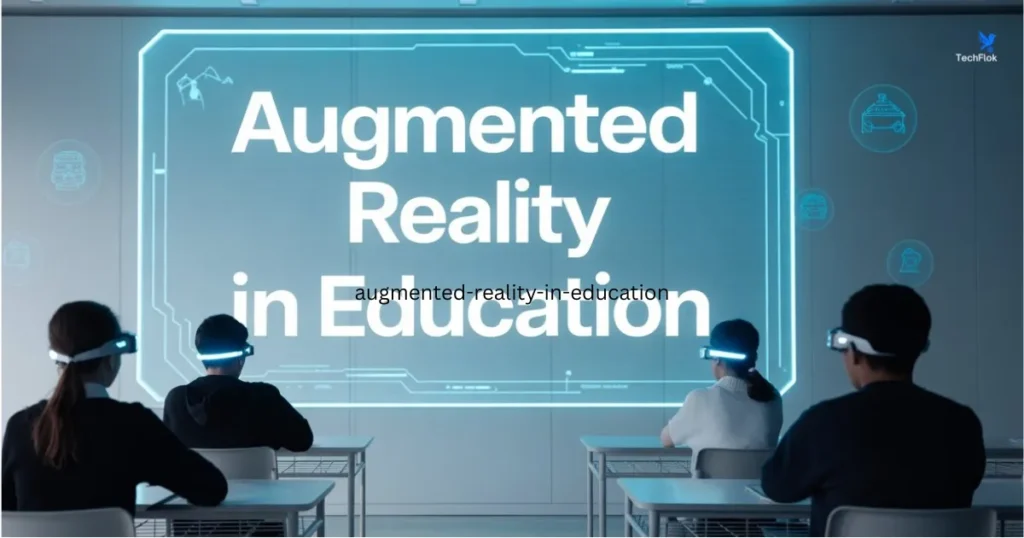
Augmented Reality Entertainment is changing the manner in which we really enjoy movies, games, music as well as live events. It is transforming the ordinary areas into a flashing and engaging experience. A dream adventure can be initiated by holding your smartphone in front of a table. Or see what you want to see by having your favorite musician on your TV right in your bedroom. Anyway it is a new form of entertainment
Augmented Reality Entertainment is a new digital experience that incorporates digital elements, such as animations images or even sound into the real world increasing the things we see or hear in real-time. Contrary to Virtual Reality which immerses users in an entirely digital environment, AR enhances the real world by incorporating the use of interactive content.
Think about it this way. Imagine that you’re watching your favorite performer live using your smartphone or smart glasses, and you can see moving lyrics floating in the air, animations, or even a holographic representation of the singer. This is Augmented Reality entertainment at work.
From mobile gaming to interactive TV shows Augmented Reality is developing into a significant media force, changing the way we
- Games to play
- Participate in concerts
- Watch movies
- Join social media
- Experience theme parks
As AR hardware becomes more accessible and software becomes more advanced, entertainment is no longer limited to screens; it extends into our everyday lives.
How Augmented Reality Works in Entertainment?
At its heart, Augmented Reality utilizes three main components:
- The device is typically a tablet, smartphone, smart glasses, or an AR headset
- A camera or sensor can be used to identify surfaces and surroundings, or the faces of people
- Software for AR that processes this data and creates digital content in real-time.
In the world of entertainment, this results in the following situations:
A live football game becomes more exciting when your app displays real-time statistics that are floating over the players.
- You can use the AR glasses to view an imaginary creature walking alongside you during a movie screening.
Augmented Reality Entertainment technology analyzes the images your camera captures and overlays the relevant content effortlessly. It can utilize location information, motion tracking, and face recognition to put effects where they belong. For the user, it is natural, as well as immersive and magical, without having to set up a whole digital setup.
AR in Gaming: The New Era of Immersive Play
Gaming is the most widely recognized and widely used type of Augmented Reality entertainment, and with good reason.
Games such as Pokémon Go, which attracted millions of people worldwide, showed that AR could transform the entire world into an interactive playground. However, this was just the beginning.
Today’s AR games:
- Your backyard can be transformed into an open field
- Have fun solving problems on your coffee table
- Change your wall into the gateway to a different world
Popular genres in AR gaming include:
- The adventure and the treasure hunting, e.g, Jurassic World Alive
- Zombie-shooters in your actual environment
- Games based on sports and fitness that react to your movements
- Multiplayer AR fights connect players around the world
The in-depth nature of the game offers AR gaming, which bridges the gap between physical and digital. It draws gamers physically, emotionally, and socially – far greater than console-based traditional games. As smartphones get better and AR glasses become more mainstream, it is expected that AR gaming will rule the coming decade of interactive entertainment.
Augmented Reality in Live Events and Concerts
Live events festivals and concerts are taking advantage of AR to make the experience more engaging, personal, and memorable.
With AR:
- Fans can view Augmented Reality Entertainment Holographic shows on their smartphones.
- Concertgoers can turn on 3D-based visuals that sync to the music
- Fans of sports can scan their tickets and get access to live stats of players and behind-the-scenes footage
- Home viewers can take part in online stages via AR streaming platforms
For instance, Travis Scott’s Fortnite concert mixed gaming and AR, attracting more than 12 million people to the most surreal, mystical performance. Major festivals such as Coachella have now added AR filters as well as interactive maps to increase the enjoyment of the crowd.
Live Augmented Reality entertainment with AR isn’t only fancy, it’s broad. Viewers who are watching at home can enjoy the same experiences that those in-person attendees enjoy and bridge the gap between physical and virtual events.
Theme Parks and AR: Enhancing the Visitor Experience
The theme parks have always focused on storytelling and a sense of immersion. Through AR, they can elevate these principles to the next step.
Here’s how:
- Visitors can install Augmented Reality Entertainment apps, which provide real-time navigation, trivia, and AR-based games
- Rides may include Interactive digital overlays, such as shooting games or creating magical effects
- The characters can appear on your screen — standing alongside you or directly talking to you.
- Children can discover hidden treasures that are virtual throughout the play area.
For example, Disney’s Play App lets guests play by playing AR games even while they are waiting, which makes waiting more pleasurable. Universal Studios is testing enhanced rides that are AR that let guests experience dragons, aliens, as well as digital barriers that respond to their motions.
The use of AR lets theme parks provide personalized, rich in story experiences that can be repeated because the things you see and experience will change every time you visit.
Augmented Reality in Social Media and Filters
If you’ve ever tried an animal-face filter, changed the color of your hair in a photo, or even added animations on your TikTok dance video, then you’ve tried AR.
Platforms for social media such as Instagram, Snapchat, TikTok, as well as Facebook, provide the AR-based playgrounds for millions of people:
- Include Real-time filtering in your videos and photos.
- Test out virtual makeup glasses, makeup, or clothing
- Make use of Interactive lenses to make games like quizzes or memes.
- Brands are now launching customized filters for AR to help promote their brands and their products.
Augmented Reality Entertainment on social media platforms isn’t just for fun, but also an effective promotional tool for businesses, an engagement driver, and a creative outlet. For creators, it’s an effective means to be noticed and to increase the number of followers. For brands, it’s a way to communicate with their customers via engaging campaigns. For the users, it’s an opportunity to showcase their personalities, have fun, and create a sense of community
AR for Home Entertainment: Merging Comfort with Tech

Augmented Reality Entertainment is now a part of our homes, not just through filters or games, but also through training and relaxation, as well as life.
Here’s how they make use of AR from home
- Board games with interactive graphics that play around your tables
- Fitness applications that analyze your form and help you correct your posture
- Storybooks that come to life for kids with animated characters and voices
- Educational applications that show the solar system and the human body in 3D
- Tools for interior design that let you put furniture in a virtual space before purchasing
Even apps for meditation and music today offer AR-based visualizations to boost your mood.
The great thing about AR television is the fact that it does not require a large amount of equipment–a tablet or smartphone can be sufficient. As smart glasses become cheaper, everyday life could soon be filled with exciting moments, even from your couch.
Film and Television: Augmented Reality Storytelling
In TV and film, AR is redefining how we consume content, making it personalized and interactive.
Here’s how:
- Utilize smartphones to identify posters and unlock exclusive behind-the-scenes videos
- Go to a movie, and then look around your home for clues by using AR overlays
- Participate in a virtual film premiere where characters are projected into your space
- Download AR applications that are tied to shows that allow you to manipulate characters or the plot
Think of watching a show in which a dragon is flying over your living space as the show begins, or a mystery show in which your phone is an investigative tool. Augmented Reality Entertainment storytelling transforms viewers into active participants by giving them the ability to be involved and a greater emotional stake. Studios such as Netflix, HBO, and Disney are testing companion AR experiences that extend their universes outside of the screens. As AR storytelling develops, the lines between fantasy and reality will remain blurred
Unique Benefits of Augmented Reality Entertainment
Customizable Experiences Based on Personal Preference
In contrast to traditional media, which gives every viewer the same experience, AR entertainment adapts to the user. When you’re watching a live event or visiting the theme park, AR will modify the audio, visuals, and storyline depending on the person you are.
- The mood settings
- Age group
- Location
- Previous interactions
This allows for customized entertainment experiences, which makes each interaction distinctive, even when it’s the same content.
Fosters New Forms of Social Interaction
Augmented Reality doesn’t only provide entertainment for one person. It promotes sharing experiences in new ways:
- Play AR games with multiple users inside the exact space
- Participate in a virtual concert with your loved ones while viewing the results that are shared
- Make use of AR avatars that simulate facial expressions in real-time chat
In contrast to traditional media, AR entertainment turns media into a social play area and often includes an asynchronous interface.
Turns Passive Spaces into Playgrounds
Tables, walls, sidewalks, even parks, AR can turn every surface into an art canvas or even a game area. It doesn’t require the use of a stage, studio, or screen.
Examples:
- A coffee shop is transformed into the scene of a detective drama
- The ceiling of your bedroom is the possibility of stargazing
- A blank wall transforms into the stage for live music
It’s the case that entertainment is a part of you, not the reverse.
Accessible for Neurodiverse and Differently-Abled Users
Augmented Reality Entertainment provides special access features that traditional entertainment cannot provide
- Visual storytelling for hearing-impaired users via the use of holograms
- Games based on audio for the visually impaired
- Specific interactions based on sensory preferences for neurodivergent people (like people with autism)
Through permitting users to decide the speed, visuals, and even the interaction, AR opens new possibilities for all-inclusive entertainment.
Creates Persistent, Living Worlds
Thanks to AR cloud technologies, objects are able to be permanently anchored to the real world so that others can see them in the future. Imagine:
- You leave a message on the internet or graffiti on an open space
- Fans take part in an ongoing AR sculpture during an event venue
- Your choices in the AR film will affect what other viewers are likely to see next
This implies that entertainment may change over time and be influenced by an audience of many people. This is like a game that is open to all that is played in real life.
Stimulates Physical Movement and Mental Engagement
As opposed to sitting on a sofa, AR usually requires:
- Take a walk around
- Solve puzzles
- Explore physical space
This is a great way to encourage:
- Improved physical health by moving
- Improves cognition by facilitating interactive problem-solving
- Emotional involvement through the act of telling tales or choosing
The Augmented Reality Entertainment experience is comprehensive; it’s an exercise for the body, brain, and even your emotions.
Empowers User-Generated Creativity
AR tools enable anyone to create rather than consumers. Platforms such as Spark AR and Snapchat Lens Studio permit:
- Fans can create their own AR filters
- Users can create custom storylines or interact with
- Artists can provide additional layers to entertainment
It’s entertaining and encourages participants rather than just watching the shift away from viewer to maker.
Builds Deeper Emotional Memory through Sensory Blending
Because AR blends auditory visual, and spatial signals in the real world, this stimulates all the senses simultaneously, resulting in more emotional memories.
For instance:
- An Augmented Reality Entertainment romance story that is projected onto the wall of your bedroom is more authentic than one on screens
- A game of terror that reacts to your movements and creates a long-lasting adrenaline surge
This multi-sensory interaction helps make AR media more emotional, memorable, and powerful than traditional formats.
Conclusion
Augmented Reality entertainment is no longer a futuristic fantasy, but an expanding, thriving real-world. From music and gaming to experiences at home as well as social networks, AR has revolutionized the ways we consume content. As technology gets more accessible and sophisticated, the integration of AR into our everyday entertainment is seamless, personalized, and awe-inspiring.
Creators, businesses, and consumers alike have to adjust to this change, because what’s coming to entertainment will not be simply something you see.
It’s the thing that you walk into.
FAQs
What makes AR different from VR for entertainment?
AR enhances the real world through digital overlays, and VR creates a completely virtual space. AR is typically more useful for entertainment than it is in everyday life.
Do I require any special equipment in order to experience AR Entertainment?
Most of the time, the answer is usually no. Most AR experiences are available on tablets and smartphones. For more advanced settings, you can make use of AR headsets or glasses.
Is AR-related entertainment suitable for children?
Yes, if employed under supervision. A lot of AR apps are created to help with education and recreation. Be sure to check the age rating as well as privacy settings.
What are the most well-known AR entertainment applications?
Pokémon Go, Snapchat, AR Dragon, BBC Civilizations AR, and Wizards Unite are notable examples.
Will AR be able to replace conventional entertainment?
Do not replace, but improve. AR provides new ways to enjoy entertainment, but traditional formats such as cinema, TV, and theatre will continue to be a part of changing AR media.


